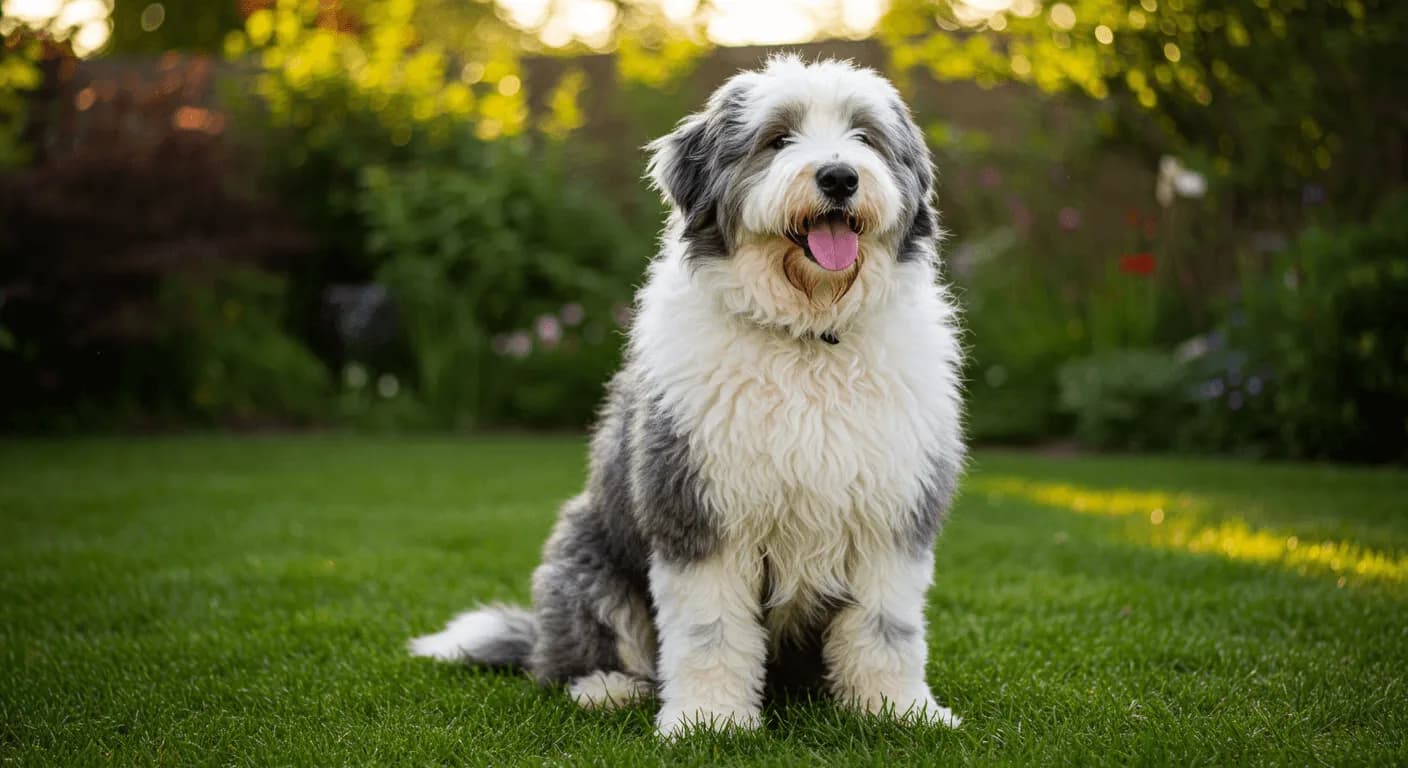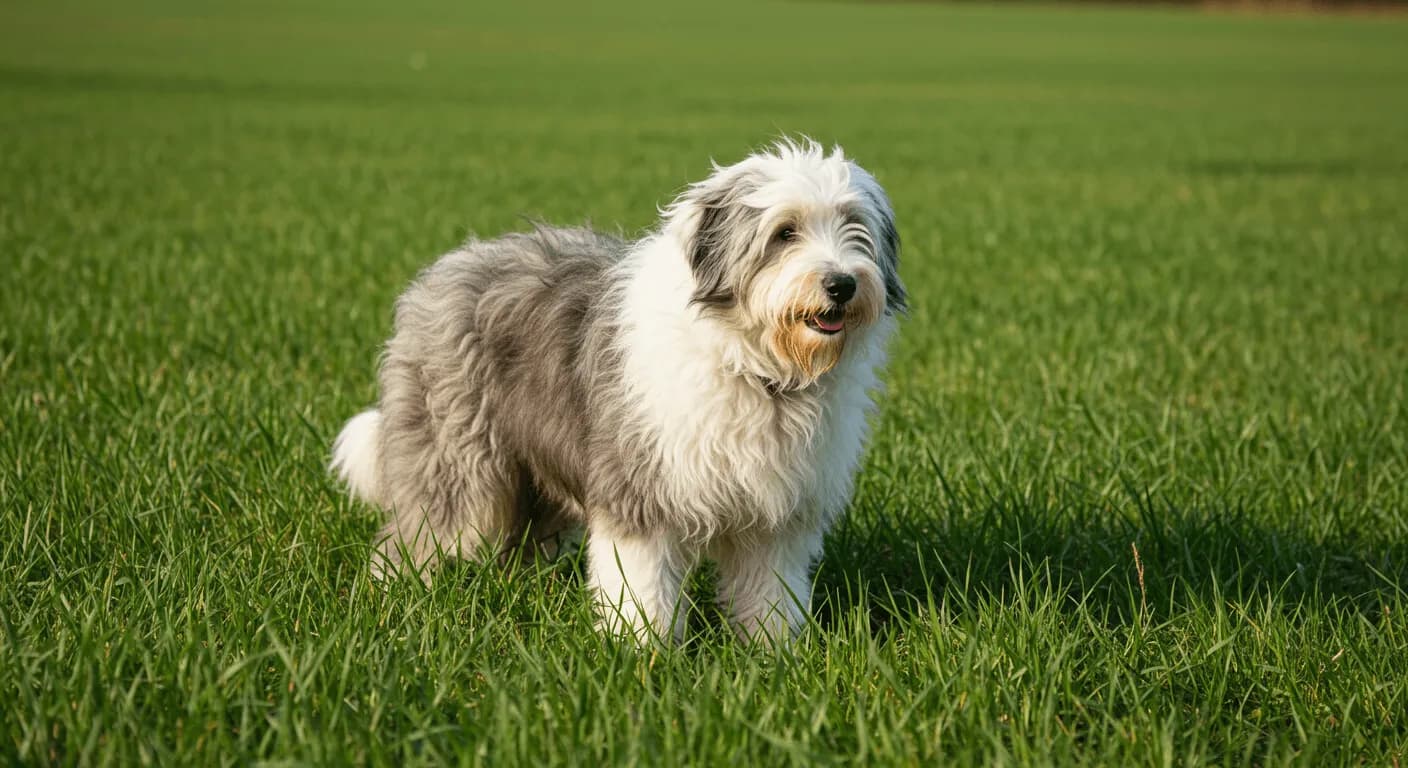Old English Sheepdogs are one of the most recognizable dog breeds, thanks to their fluffy coats, charming personalities, and distinctive shaggy appearance. These large, affectionate dogs were originally bred to herd sheep and cattle and have since become beloved companions for families around the world. Known for their intelligence and gentle temperament, Old English Sheepdogs (OES) require dedicated care to thrive as pets. In this Old English Sheepdog care guide, we’ll walk you through everything you need to know to keep your OES healthy, happy, and well-groomed.
Despite their friendly nature, many potential owners hesitate to adopt one due to misconceptions. One of the most common concerns is grooming. Indeed, the Old English Sheepdog has a high-maintenance coat, but with the right tools and routine, grooming becomes a manageable—and even bonding—experience. Another frequent question is about their size and space needs. Although they’re large dogs, they’re surprisingly adaptable and can live well in various home arrangements with proper exercise.
Let’s delve deeper into how to take care of an Old English Sheepdog, from temperament to hygiene to home setup.
1. Understanding the Old English Sheepdog’s Temperament and Needs
The Old English Sheepdog is a famously docile and loving breed. Despite their working-dog heritage, they are often couch potatoes at home—though they do appreciate regular play and exercise.
General Personality Traits
- Loyal and intelligent
- Very affectionate with family members
- Cautious around strangers, which makes them decent watchdogs
- Independent but enjoys companionship
They are known for their clownish behavior and love to entertain their families with goofy antics. However, without adequate stimulation, they can become bored and destructive.
Activity Level
While not hyperactive, Old English Sheepdogs do require daily physical and mental stimulation to stay healthy. Old English Sheepdog maintenance needs include:
- At least one hour of physical exercise per day.
- Playtime involving toys, fetch, or walking.
- Mental activities like obedience training and scent games.
They excel in dog sports such as agility, herding trials, and rally obedience—great options to meet their activity needs.
Keyword-rich tip: If you’re wondering how to take care of a Old English Sheepdog, start by setting aside daily time for physical and mental exercise to prevent bad habits from forming.
2. Grooming and Hygiene Needs
Perhaps the most famous feature of the breed is its luxurious double coat. But this attribute also means that grooming is one of the most important aspects of Old English Sheepdog care.
Coat Type and Grooming Essentials
Old English Sheepdogs have a dense undercoat and a coarse, fluffy topcoat, which tangles easily and holds onto dirt if not properly maintained.
Old English Sheepdog grooming requirements include:
- Brushing the coat thoroughly at least three times a week (daily is ideal)
- Detangling mats around ears, elbows, and rump
- Professional grooming every 6–8 weeks if you’re not doing full grooming at home
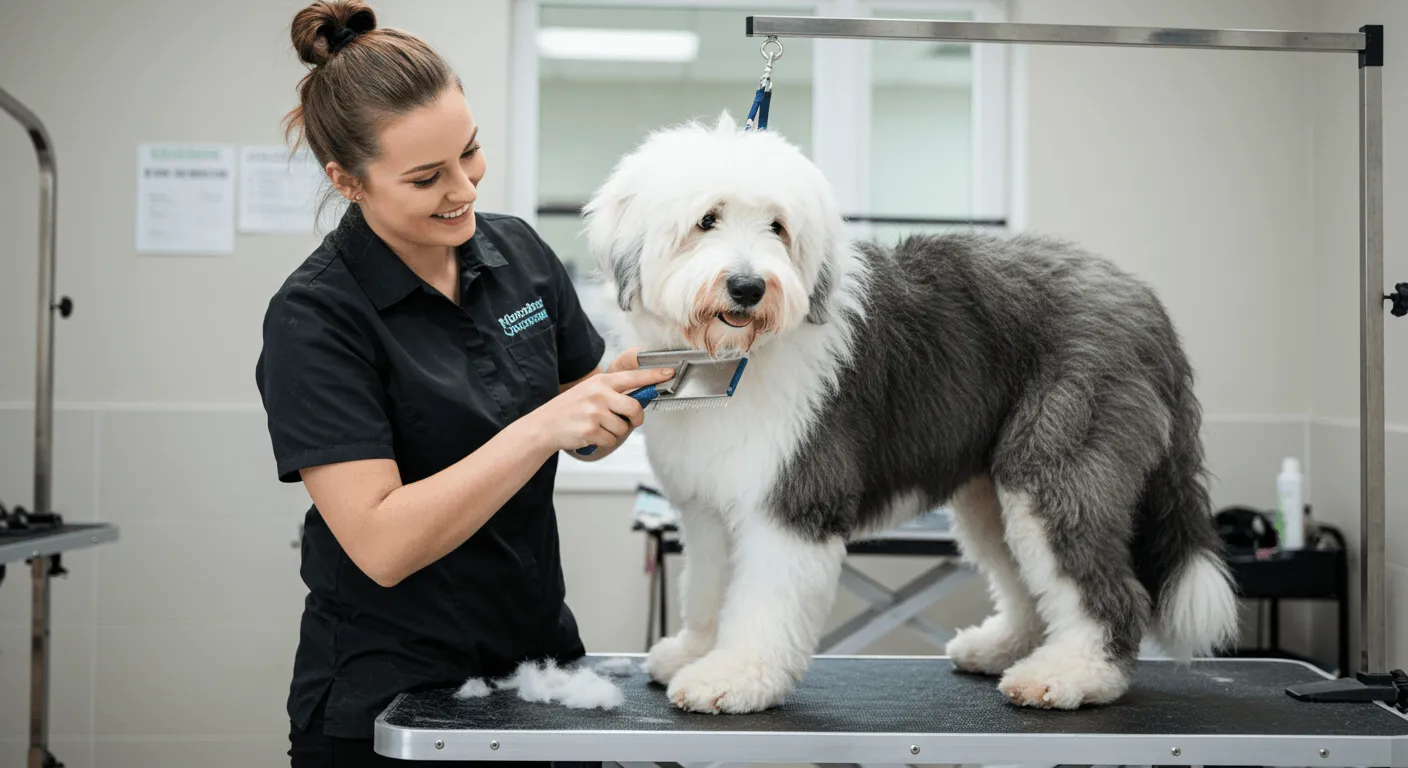
Bathing & Hygiene
Due to their thick coat, Sheepdogs benefit from bathing every 4–6 weeks. Always use a high-quality, dog-safe shampoo and dry the coat thoroughly to prevent skin issues.
Important reminder: Old English Sheepdog shedding can increase during seasonal changes. While they are not heavy shedders year-round, during spring and fall you’ll notice more fur fallout.
Additional Hygiene Practices
- Trim nails every 2–3 weeks.
- Clean ears weekly to prevent infection.
- Brush teeth 2–3 times per week for dental health.
3. Health Concerns and Veterinary Care
Being a large breed, the Old English Sheepdog comes with its own set of breed-specific health needs. While generally healthy, early detection and preventive care make a huge difference in long-term well-being.
Common Health Issues in Old English Sheepdogs
- Hip Dysplasia: Monitor posture and movement for early signs.
- Hypothyroidism: Symptoms include lethargy, weight gain, and thinning fur.
- Cataracts and eye issues: Regular eye exams help in early detection.
- Progressive Retinal Atrophy (PRA)
- Deafness: Some lines are more prone to hearing loss.
Tip: Regular check-ups are an essential part of how to keep Old English Sheepdogs healthy.
Veterinary Routine
- Initial puppy vaccinations and boosters
- Annual exams and dental cleaning
- Flea, tick, and heartworm prevention
- Spaying or neutering if not breeding responsibly
Note: Some owners choose to do genetic testing to screen for inherited conditions. Consult your vet if you're planning to breed or want a complete health report.
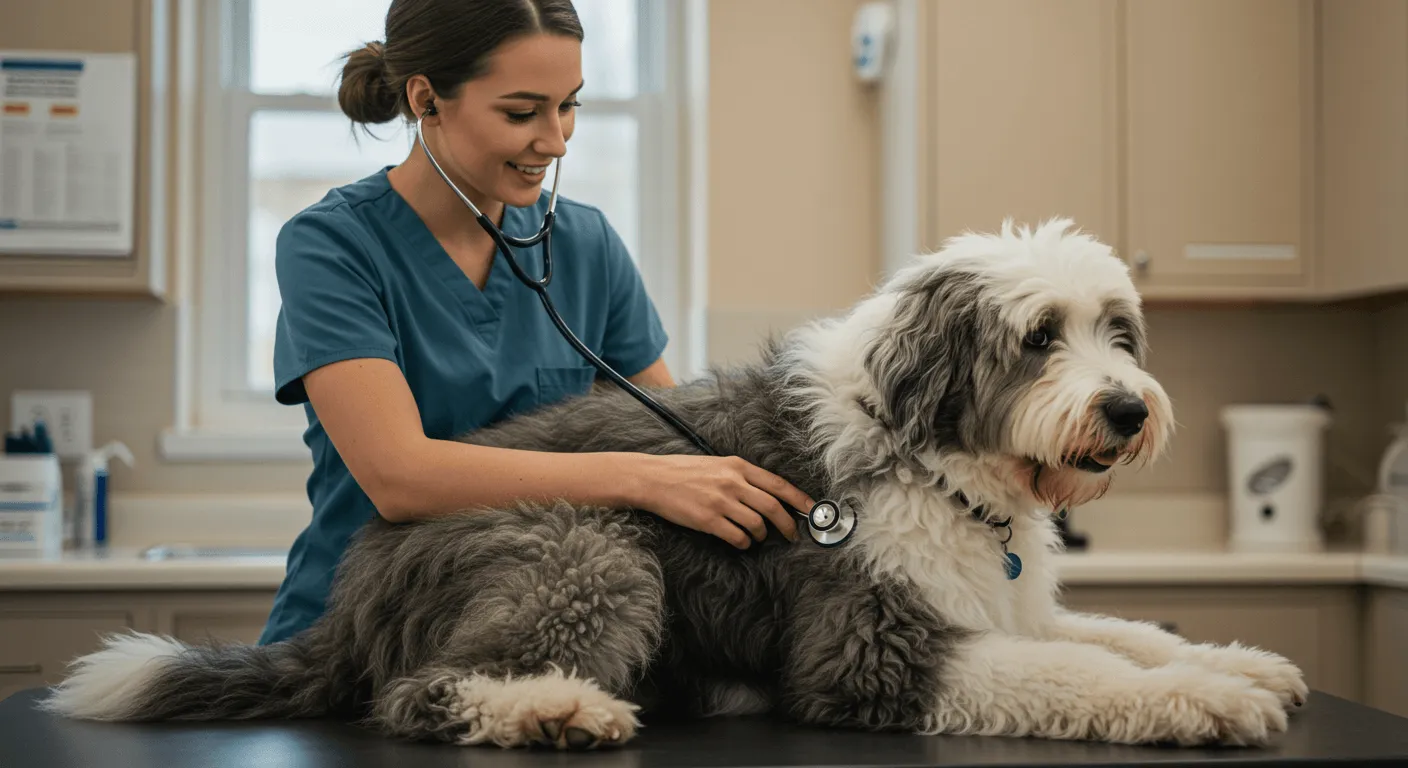
4. Should an Old English Sheepdog’s Ears Be Cropped?
Unlike breeds such as the Doberman or Great Dane, ear cropping is not traditionally performed on Old English Sheepdogs. Their ears are soft, floppy, and naturally adorable.
Ethical and Legal Considerations
- There is no functional reason to crop an Old English Sheepdog’s ears.
- The procedure is purely cosmetic and involves pain and risk.
- Ear cropping is banned or restricted in many countries.
Should Old English Sheepdog ears be cropped? Absolutely not. The breed standard favors their natural, floppy look, and cropping brings unnecessary harm.
5. Should an Old English Sheepdog’s Tail Be Docked?
Historically, Old English Sheepdogs had their tails docked to signify working-dog status. In fact, they earned the nickname “bobtail” from this practice. However, modern breeding trends vary.
Tail Docking: Then and Now
- Once used to avoid taxes on pet dogs in the UK
- No longer needed; done mainly for cosmetic reasons
- Legal status varies worldwide
Key question: Is tail docking painful for Old English Sheepdogs? Yes, especially if done after the puppy stage. It involves surgery and nerve trauma.
Today, many breeders leave the tail natural, and it doesn’t interfere with the breed’s health or performance.

6. Should an Old English Sheepdog Be Muzzled?
Generally gentle and not aggressive by nature, Old English Sheepdogs don’t typically require muzzles. However, situations may arise where a muzzle is useful for safety or veterinary visits.
When a Muzzle May Be Appropriate
- During vet visits or grooming for fearful dogs
- In unfamiliar settings if the dog has shown anxiety
- If required by local law or leash-free areas
If used, it’s crucial to select the right size and type of muzzle. Start muzzle training early and pair it with positive reinforcement.
Common concern: Do Old English Sheepdogs need a muzzle? Not usually, but training your dog to accept one can be beneficial for emergencies.
7. Creating a Comfortable Living Environment
The OES may be a big dog, but it doesn’t mean you need a farm. They adapt well to many environments with the right setup.
Best Home Setup for Old English Sheepdogs
Old English Sheepdogs do best in homes that allow them room to move freely and access to the outdoors.
- While a large yard is helpful, it’s not mandatory.
- They can adapt to apartment living if exercised regularly.
- Indoors, they need a quiet corner or a soft bed away from constant activity.
Keyword tip: To determine whether Old English Sheepdogs need a large yard, focus more on exercise time than home size.
Must-Have Items
Here’s a list of household essentials for a happy Sheepdog:
- Orthopedic dog bed
- Interactive toys and puzzle feeders
- Grooming table or space
- Leash, harness, and collar
- Crate (for crate training and safe space)
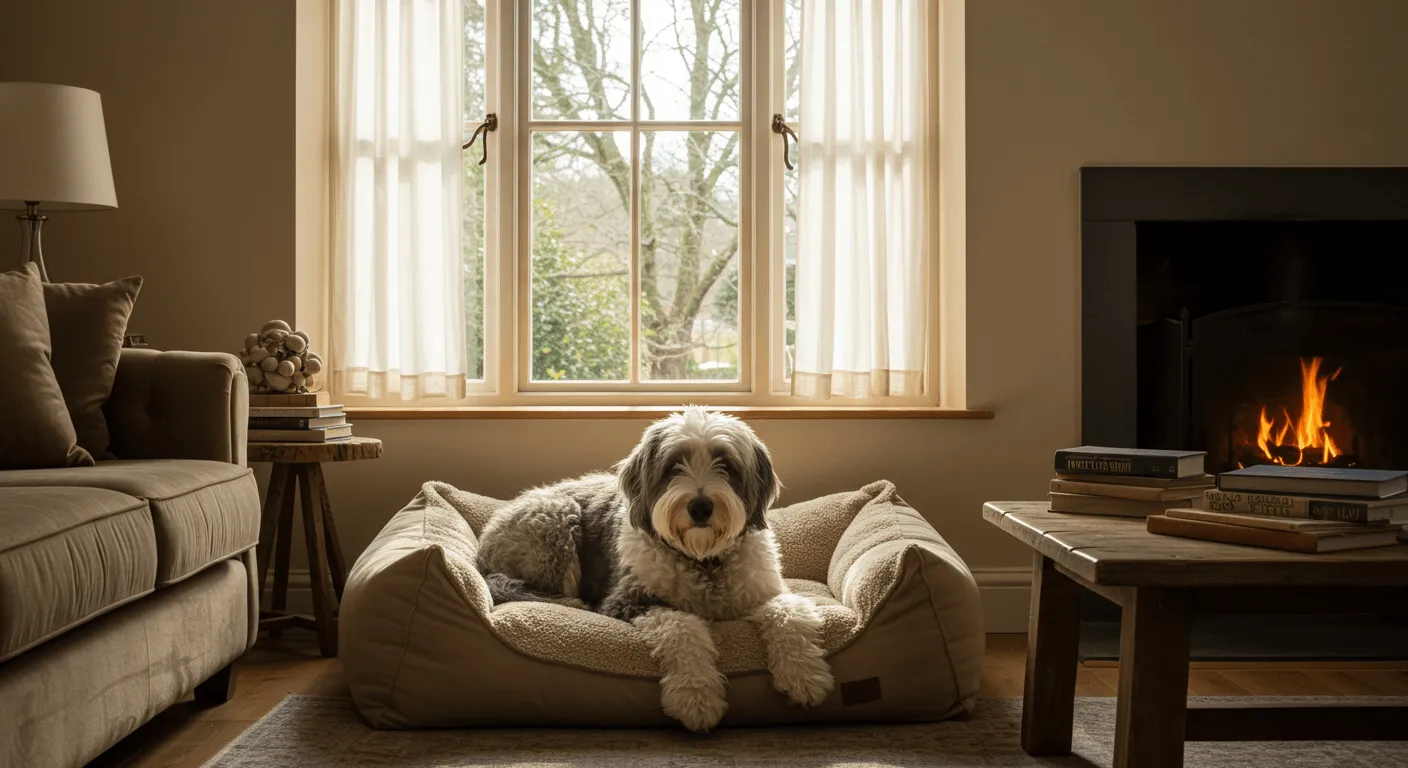
8. Socialization and Family Compatibility
The Old English Sheepdog is a top choice for families and does well with children when socialized properly.
Interactions with Family and Strangers
- Great with kids—gentle, patient, and playful
- Might herd small children by instinct (gentle corrections help manage this)
- Typically friendly with other pets when raised together
- Early socialization is essential for good manners
SEO tip: Many ask, is Old English Sheepdog good with kids? Absolutely! They’re often called “nanny dogs.”
How to Socialize a Old English Sheepdog
Socialization should start early and involve positive experiences with a variety of people, pets, and settings:
- Introduce new sounds, places, and people gradually.
- Enroll in puppy kindergarten or group classes.
- Reward calm, positive behavior around strangers and other animals.
An unsocialized Old English Sheepdog may become shy or fearful, so daily reinforcement helps build confidence.
Key Takeaways
Each section above plays a crucial role in ensuring your Old English Sheepdog lives a happy, healthy life. By meeting grooming needs, providing the right exercise, setting up their living environment for comfort, and giving them plenty of love and structure, you’ll ensure a long and joyful life together.
Stay tuned for the final section, where we’ll wrap everything up with a powerful conclusion filled with care tips and encouragement for responsible Old English Sheepdog ownership!## Conclusion
Caring for an Old English Sheepdog is a rewarding journey filled with affection, loyalty, and playful companionship. While they may require more attention in grooming and exercise than some other breeds, their friendly demeanor and loving nature make every bit of that effort worthwhile. From understanding their unique temperament to meeting their grooming needs, confirming their health through regular vet visits, and creating a safe and enriching environment, each aspect of care is crucial in ensuring your Sheepdog lives a happy and fulfilling life.
Whether you're a prospective owner or already have one of these lovable “bobtails” by your side, remember that consistency, patience, and genuine affection are the keys to a lifelong bond. Use this Old English Sheepdog care guide as your go-to resource for everything from exercise to socialization and home preparation.
By taking the time to understand how to take care of an Old English Sheepdog, you're not just maintaining a pet—you’re nurturing a loyal family member. With the right care, your Old English Sheepdog will repay you with endless love, laughter, and unforgettable memories.

